
Gary Busey is an American actor. He is known for his portrayal of Buddy Holly in The Buddy Holly Story (1978), for which he was nominated for the Academy Award for Best Actor and won the National Society of Film Critics Award for Best Actor. His other starring roles include A Star is Born (1976), D.C. Cab (1983), Silver Bullet (1985), Lethal Weapon (1987), Predator 2 (1990), Point Break (1991), Under Siege (1992), Rookie of the Year (1993), The Firm (1993), Black Sheep (1996) and Lost Highway (1997).
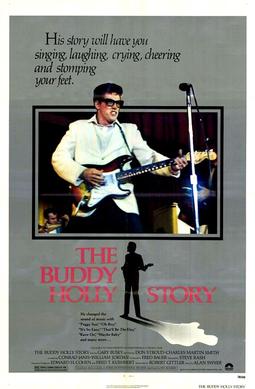
The Buddy Holly Story is a 1978 American biographical film directed by Steve Rash which tells the life and career of rock and roll musician Buddy Holly. It features an Academy Award-winning musical score, adapted by Joe Renzetti and Oscar-nominated lead performance by Gary Busey. The film also stars Don Stroud, Charles Martin Smith, Conrad Janis, William Jordan, and Maria Richwine, who played Maria Elena Holly.

Straw Dogs is a 1971 psychological thriller film directed by Sam Peckinpah and starring Dustin Hoffman and Susan George. The screenplay, by Peckinpah and David Zelag Goodman, is based upon Gordon M. Williams's 1969 novel, The Siege of Trencher's Farm. The film's title derives from a discussion in the Tao Te Ching that likens people to the ancient Chinese ceremonial straw dog, being of ceremonial worth, but afterwards discarded with indifference.

Dirty Dancing is a 1987 American romantic drama dance film written by Eleanor Bergstein, produced by Linda Gottlieb, and directed by Emile Ardolino. Starring Patrick Swayze and Jennifer Grey, it tells the story of Frances "Baby" Houseman, a young woman who falls in love with dance instructor Johnny Castle (Swayze) at a vacation resort.
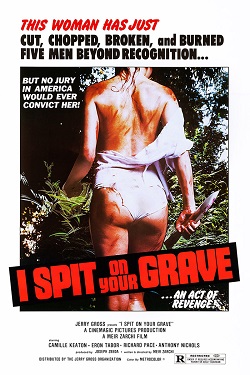
I Spit on Your Grave is a 1978 American rape and revenge film edited, written, and directed by Meir Zarchi. The film tells the story of Jennifer Hills, a fiction writer based in New York City who exacts revenge on each of her tormentors after four men gang rape and leave her for dead.

Straight Time is a 1978 American crime drama neo-noir film directed by Ulu Grosbard and starring Dustin Hoffman, Theresa Russell, Gary Busey, Harry Dean Stanton, M. Emmet Walsh, and Kathy Bates. Its plot follows a lifelong thief in Los Angeles who struggles to assimilate in society after serving a six-year prison sentence. The film is based on the novel No Beast So Fierce by Edward Bunker, who also acts in the film.
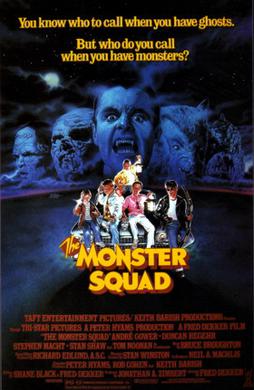
The Monster Squad is a 1987 American black comedy horror film directed by Fred Dekker, and written by Dekker and Shane Black, who met as classmates at UCLA. Peter Hyams and Rob Cohen served as executive producers. It was released by TriStar Pictures on August 14, 1987. The film features pastiches of the Universal Monsters, led by Count Dracula. They are confronted by a group of savvy kids out to keep them from controlling the world.

William Jacob Busey is an American actor. Among his most prominent roles have been serial killer Johnny Bartlett in 1996's The Frighteners, Ace Levy in 1997's Starship Troopers, Kyle Brenner in 2001's Tomcats, Aiden Tanner in the 2014–2016 TV series From Dusk till Dawn: The Series, and Sean H. Keyes in the Predator franchise.
Ghoulies is an American comedy horror film series that consists of four films released from 1985 to 1994. The films center on a group of small demonic creatures that have a wide range of twisted appearances.

The Dentist is a 1996 American slasher film directed by Brian Yuzna and written by Dennis Paoli, Stuart Gordon, and Charles Finch. It stars Corbin Bernsen, Linda Hoffman, Earl Boen and Ken Foree. It follows a successful but mentally unstable dentist in Los Angeles who begins committing murder. It is the first installment in The Dentist film series, followed by The Dentist 2.
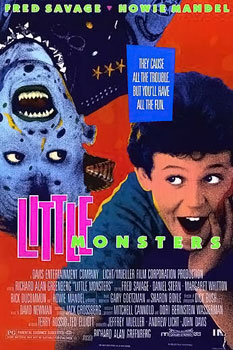
Little Monsters is a 1989 American comedy film starring Fred Savage and Howie Mandel and directed by Richard Alan Greenberg. It tells the story of a boy who befriends a real-life "monster under the bed" and discovers a secret world of monsters who sneak into children's bedrooms at night to pull pranks on them. Although the film failed critically and financially, receiving a limited theatrical release due to Vestron’s bankruptcy, it obtained a cult following on home video and is considered a requisite title in the gateway horror genre.
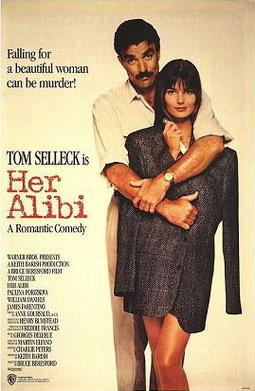
Her Alibi is a 1989 American romantic comedy film directed by Bruce Beresford, written by Charlie Peters and starring Tom Selleck, Paulina Porizkova, William Daniels, and James Farentino.

Visiting Hours is a 1982 Canadian psychological slasher film directed by Jean-Claude Lord and starring Lee Grant, Michael Ironside, Linda Purl, William Shatner and Lenore Zann. The plot focuses on a feminist journalist who becomes the target of a serial killer, who follows her to the hospital after attacking her in her home.

Billy Liar is a 1963 British CinemaScope comedy-drama film based on the 1959 novel by Keith Waterhouse. Directed by John Schlesinger, it stars Tom Courtenay as Billy and Julie Christie as Liz, one of his three girlfriends. Mona Washbourne plays Mrs. Fisher and Wilfred Pickles plays Mr. Fisher. Rodney Bewes, Finlay Currie and Leonard Rossiter also feature. The Cinemascope photography is by Denys Coop and Richard Rodney Bennett supplied the score.
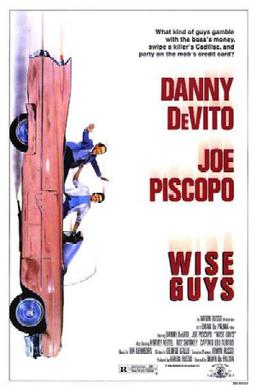
Wise Guys is a 1986 American black comedy crime film directed by Brian De Palma and produced by Aaron Russo from a screenplay written by George Gallo and Norman Steinberg. It stars Danny DeVito and Joe Piscopo as two small-time mobsters from Newark, New Jersey, and features Harvey Keitel, Ray Sharkey, Lou Albano, Dan Hedaya, and Frank Vincent.
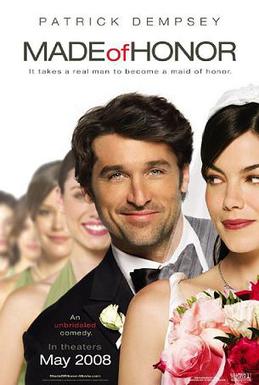
Made of Honor is a 2008 American romantic comedy film directed by Paul Weiland and written by Adam Sztykiel, Deborah Kaplan, and Harry Elfont. The film stars Patrick Dempsey, Michelle Monaghan, and Sydney Pollack, in his final screen appearance prior to his death less than a month after the film's release.

The Dark Eyes of London is a 1939 British horror film produced by John Argyle and directed by Walter Summers, and starring Béla Lugosi, Hugh Williams, and Greta Gynt. The film is an adaptation of the 1924 novel of the same name by Edgar Wallace. The film is about a scientist named Dr. Orloff who commits a series of murders for insurance money, while periodically disguising himself as the blind manager of a charity to further his scheme.
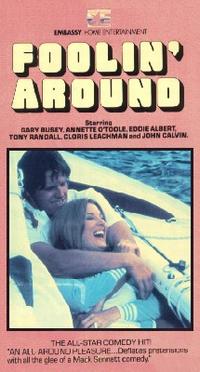
Foolin' Around is a 1980 American comedy romance sport film directed by Richard T. Heffron and starring Gary Busey and Annette O'Toole. The film was shot on location in Minneapolis and St. Paul. The theme music was performed by Seals and Crofts.

The Firm is a 1993 American legal thriller film directed by Sydney Pollack and starring Tom Cruise, Jeanne Tripplehorn, Gene Hackman, Ed Harris, Holly Hunter, Hal Holbrook, David Strathairn and Gary Busey. The film is based on the 1991 novel The Firm by author John Grisham. The Firm was one of two films released in 1993 that were adapted from a Grisham novel, the other being The Pelican Brief.

Marmaduke is a 2022 computer-animated comedy film directed by Mark Dippé, and co-directed by Phil Nibbelink, Youngki Lee, and Matt Whelan, based on the comic strip of the same name by Paul and Brad Anderson. It is the second feature-length film based on the strip following the 2010 live-action film. The film stars Pete Davidson as the voice of Marmaduke, along with J. K. Simmons and David Koechner. It was released by SC Films in international countries and on Netflix in the United States on May 6, 2022. Marmaduke was universally panned by critics and audiences, with criticisms going towards its animation, screenplay, story, characters, and humor.



















